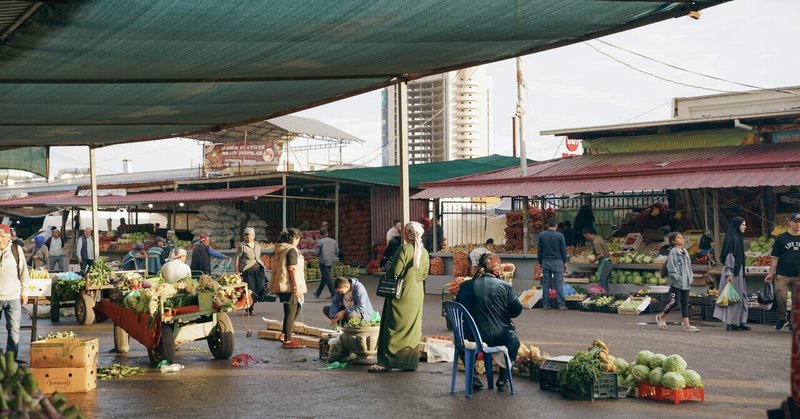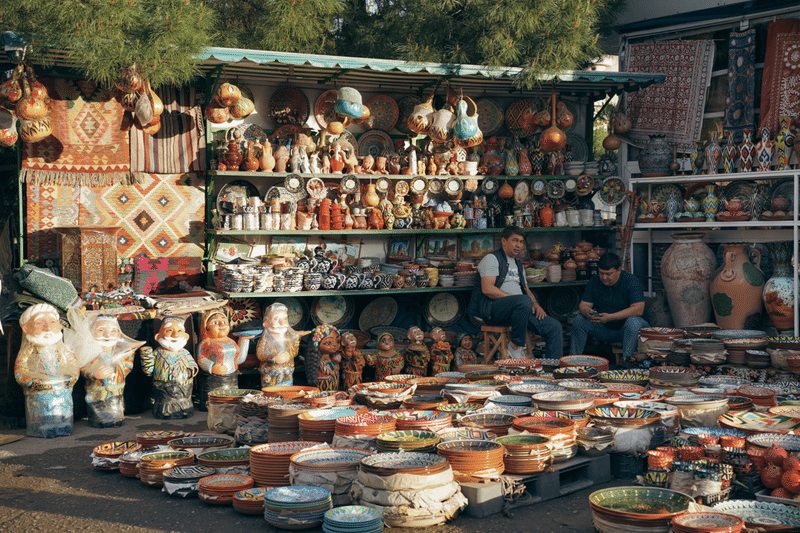
目で見て肌で感じる An expedition into embodied knowledge
今週は、ウズベキスタンのタシュケントから、ジョージアのトビリシに移動してきました。
I traveled from Tashkent in Uzbekistan to Tbilisi, Georgia, this week.
今回の一連の旅を通じて、やはり経験に優ることはないなと再認識しています。
Through these travels, I've reaffirmed that there's no substitute for personal experience.


普段から、New York Timesを読んだりBBCを見ることで、英語で情報を入手するようにしていますが、自分の目で見て、自分の肌で感じないと、何が真実か分からないのが私たちが生きている現実世界です。特に、生成系AIやディープフェイクといったテクノロジーが発展していく中で、何よりも大切なのが、純粋な「経験」になってくるでしょう。
I usually get my information in English from sources like the New York Times and BBC, but it's only by seeing with my own eyes and feeling with my own skin that I can understand what's truly real in the world we live in. This is especially important as technologies like generative AI and deepfakes evolve. Pure “experience” becomes invaluable.

例えば、ベトナムでは、韓国人や中国人、ロシア人の観光客で賑わっていることや、意外とiPhoneユーザーの多さに驚くことは、ネットの情報だけでは分からないでしょう。タイのソンクラーン祭りに参加している日本人をほとんど見かけないことや、QRコード決済を主軸とするキャッシュレス決済が一般的なこと、加えて、街中を走るバスがオンボロであることも実際に現地を訪れないと分かりません。
For example, in Vietnam, you wouldn't know from online information alone how crowded it is with tourists from Korea, China, and Russia, or the surprising number of iPhone users. Similarly, it's not apparent that there are hardly any Japanese participants at Thailand’s Songkran festival or that cashless QR code payments are the norm, not to mention that many buses on the streets are old and run-down.

今回訪れたウズベキスタンも日本のメディアでは「親日国」であるというイメージがあるような気がしたのですが(少なくとも、僕はそういったイメージを持っていました)、実際に来てみると、そんなことはないように個人的に思います。例えば、街中を見ても日本車は走っていないし、スーパーに行っても日本食(カップヌードルすら!)ありません。逆に目にみかけるのは韓国レストランや辛ラーメンです。
In Uzbekistan, where I visited, the media back in Japan often portrays it as a "pro-Japanese" country (at least, that was my impression). However, in reality, it doesn't seem so. For instance, you don't see Japanese cars on the streets, nor find Japanese food (even cup noodles!) in supermarkets. Instead, Korean restaurants and spicy ramen are more common.


第二次世界大戦でソ連軍の捕虜となった日本軍兵士が建設したというナヴォイ劇場も、これが一つきっかけとなって親日というイメージが持たれるとメディアでは書かれていますが、実際にウズベキスタン人に聞いても「あれって、日本人が作ったのだっけ?中国人が作ったのだっけ?」というような反応です。親日以前に、内陸国ということもあってか、外国人にあまりフレンドリーでないようにすら思えます。この辺りは、東南アジアの客引きが懐かしくさえも思えたりしますね。
Navoi Theater, built by Japanese POWs during World War II, is cited in the media as a reason for the pro-Japanese sentiment, but when asked, locals might confuse whether it was built by Japanese or Chinese people. Before even discussing pro-Japanese sentiments, as a landlocked country, it seems not very friendly to foreigners, making me even miss the street hawkers of Southeast Asia.

さて、旅人として、その国を理解するのに大切なことはいくつかありますが、近年だと、どの配車アプリを使っているのか、使うべきなのかというのが一つ大きくあるかと思います。例えば、東南アジア一つとっても、ベトナムではGrabが主流、タイではGrabも使えますが、現地の人はBoltを多用しているようです。また、同じ旧ソ連国でも、ウズベキスタンではYandexというロシアのGoogleとも呼ばれる企業のアプリを使いますが、今僕がいるジョージアではタイと同様、エストニアに本社をもつBoltが多く使われています。
As a traveler, understanding a country involves knowing which ride-sharing apps to use, among other things. In Vietnam, Grab is mainstream; in Thailand, both Grab and a local app called Bolt are used. In contrast, in Uzbekistan, people use Yandex, often referred to as Russia's Google, while here in Georgia, Bolt, headquartered in Estonia, is popular.

俯瞰してみると、配車アプリ一つをとっても、その国がどのような国なのか、どのような価値観を持っているのかが伺えます。いうまでもなく、日本ではライドシェアは全面的には解禁されておらず、今の日本を表しているようにも思います。どうしても「世界」を考えると、日々のニュースのように主語が大きくなってしまいますが、このように実際に旅をする、自分の身体で経験をすることで、半径5mの視点に落とし込めるのです。
This overview of ride-sharing apps provides insight into the countries' characters and values. Notably, in Japan, ride-sharing isn't fully liberalized, reflecting current Japanese policies. It's easy to think globally with the daily news having such broad subjects, but traveling and experiencing firsthand narrows it down to a perspective within a five-meter radius.
そういった意味では、旅は世界を俯瞰してみるための視点の移動であるとも言えるかもしれません。
In that sense, traveling can indeed be seen as a shift in perspective, allowing us to overview the world.

この記事が気に入ったらサポートをしてみませんか?
